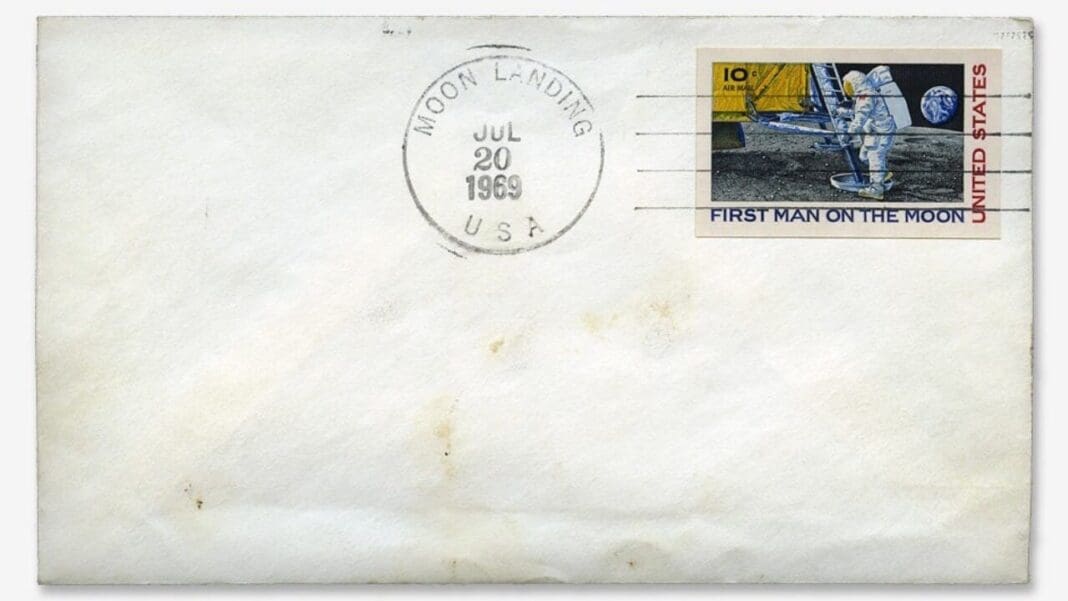The Apollo 11 astronauts made postal history on July 22, 1969
Did they space out?
The Apollo 11 astronauts — Neil Armstrong, Buzz Aldrin and Michael Collins — brought a commemorative envelope on their pioneering lunar mission with the intent to postmark it on the surface of the moon July 20, 1969, the date of the landing.
They also brought the steel master die — shaved down to a fifth of its normal weight — from which the “First Man on the Moon” postage stamp would later be printed.
The fact that the stamps would be printed from a master die that had been on the moon’s surface would intensify interest in the stamp, Postmaster General Winton M. Blount said at the time.
However, perhaps overwhelmed by their astronautical duties, the spacemen neglected to cancel the envelope, known as the “moon cover.” They made up for lost time on July 22, when the Eagle rejoined the command module in the moon’s orbit.
Each astronaut took hold of the rubber stamp and together canceled the envelope with the prototype stamp. The postmark read, “Moon Landing, USA, July 20, 1969.”
The 10-cent airmail stamp celebrating the successful mission, printed from that master die, was dedicated Sept. 9, 1969, before a meeting of the National Postal Forum in Washington, DC.
The three astronauts attended the ceremony and received “a thunderous ovation lasting nearly two minutes from an audience of more than 4,000,” Postal Life magazine reported.
Armstrong was quoted in the Sept. 10, 1969, Bridgeport (CT) Post as saying it was the realization of a dream to further the feats of the early airmail pilots he read about as a boy.
He granted that the crew “did not do well on economy” — their orbiting Post Office did not bring in any money — but joked that at least they didn’t ask for mileage reimbursement.



